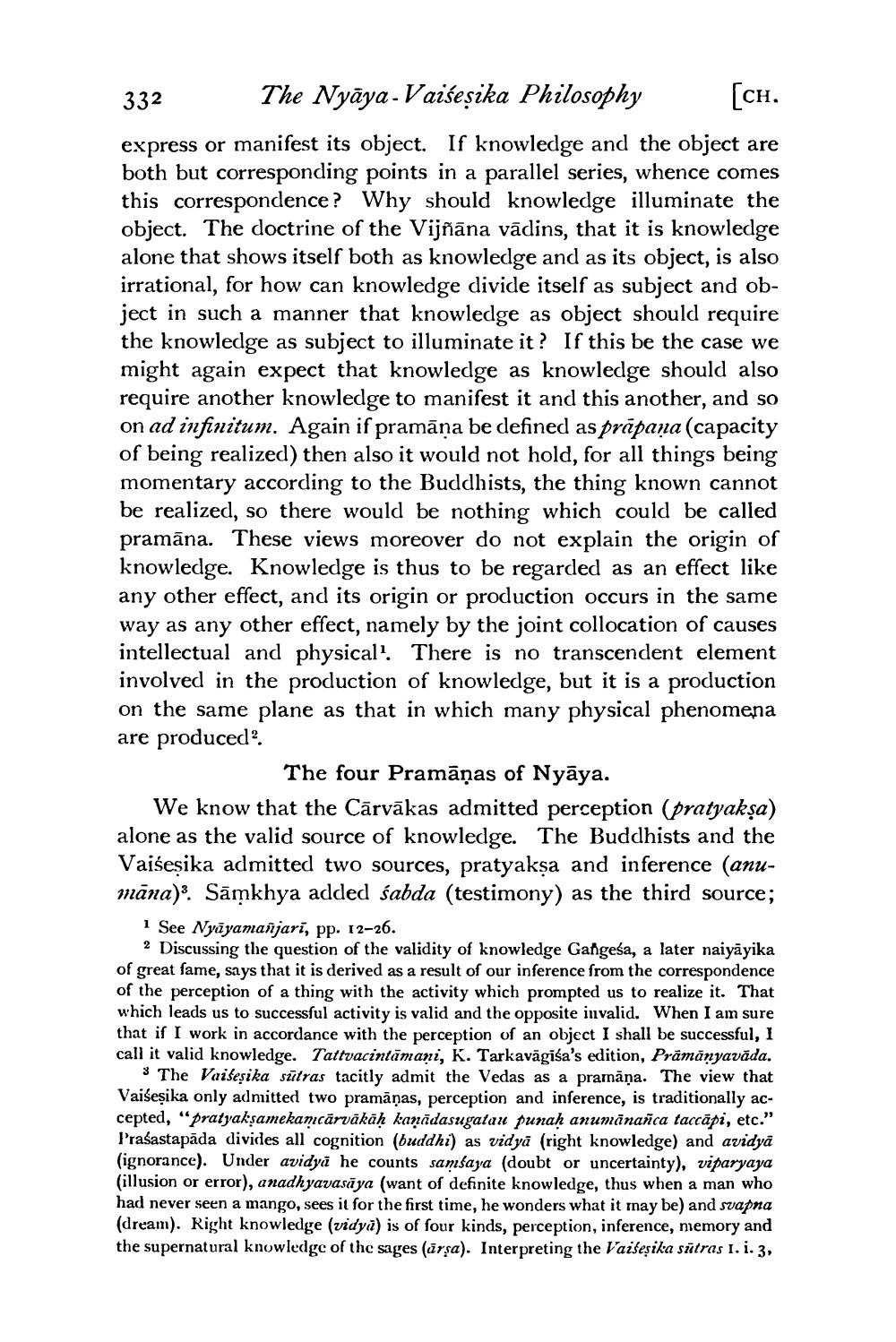________________
332
The Nyaya-Vaiseṣika Philosophy
[CH.
express or manifest its object. If knowledge and the object are both but corresponding points in a parallel series, whence comes this correspondence? Why should knowledge illuminate the object. The doctrine of the Vijñāna vādins, that it is knowledge alone that shows itself both as knowledge and as its object, is also irrational, for how can knowledge divide itself as subject and object in such a manner that knowledge as object should require the knowledge as subject to illuminate it? If this be the case we might again expect that knowledge as knowledge should also require another knowledge to manifest it and this another, and so on ad infinitum. Again if pramāna be defined as prapana (capacity of being realized) then also it would not hold, for all things being momentary according to the Buddhists, the thing known cannot be realized, so there would be nothing which could be called pramāna. These views moreover do not explain the origin of knowledge. Knowledge is thus to be regarded as an effect like any other effect, and its origin or production occurs in the same way as any other effect, namely by the joint collocation of causes intellectual and physical'. There is no transcendent element involved in the production of knowledge, but it is a production on the same plane as that in which many physical phenomena are produced?.
The four Pramāņas of Nyāya.
We know that the Cārvākas admitted perception (pratyakṣa) alone as the valid source of knowledge. The Buddhists and the Vaiseṣika admitted two sources, pratyakṣa and inference (anumāna). Samkhya added sabda (testimony) as the third source;
1 See Nyāyamañjarī, pp. 12-26.
2 Discussing the question of the validity of knowledge Gangeśa, a later naiyāyika of great fame, says that it is derived as a result of our inference from the correspondence of the perception of a thing with the activity which prompted us to realize it. That which leads us to successful activity is valid and the opposite invalid. When I am sure that if I work in accordance with the perception of an object I shall be successful, I call it valid knowledge. Tattvacintamani, K. Tarkavägiśa's edition, Prämanyavāda. The Vaiseṣika sutras tacitly admit the Vedas as a pramaņa. The view that Vaiseṣika only admitted two pramāņas, perception and inference, is traditionally accepted, "pratyakṣamekamcārvākāḥ kaṇādasugatau punaḥ anumānañca taccāpi, etc." Prasastapāda divides all cognition (buddhi) as vidyā (right knowledge) and avidyā (ignorance). Under avidya he counts samsaya (doubt or uncertainty), viparyaya (illusion or error), anadhyavasaya (want of definite knowledge, thus when a man who had never seen a mango, sees it for the first time, he wonders what it may be) and svapna (dream). Right knowledge (vidya) is of four kinds, perception, inference, memory and the supernatural knowledge of the sages (ārsa). Interpreting the Vaiseṣika sūtras 1. i. 3,




